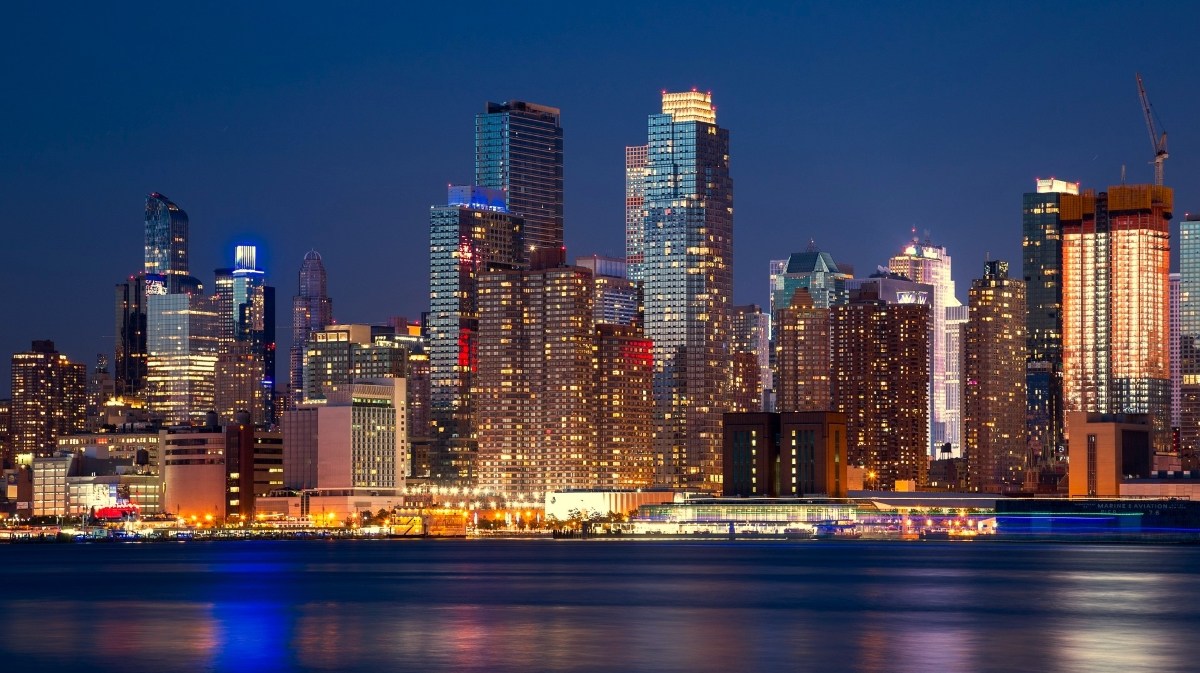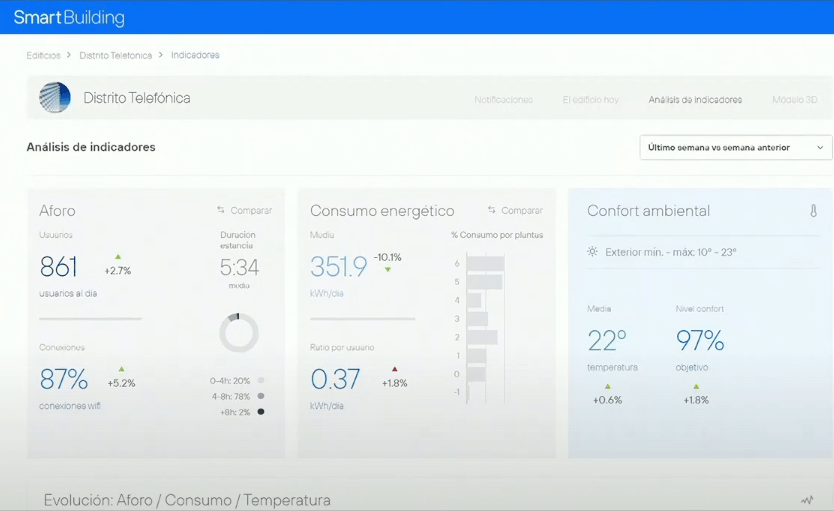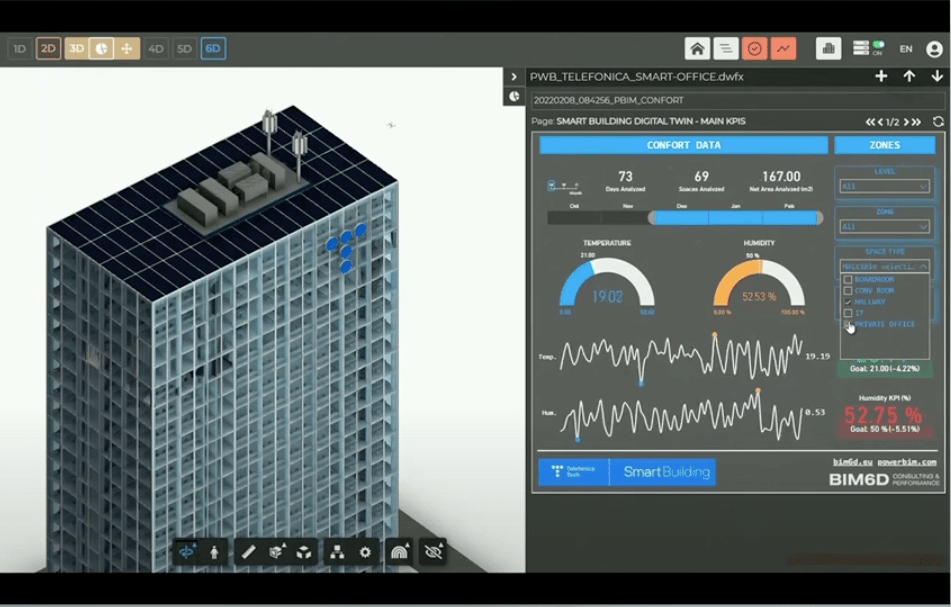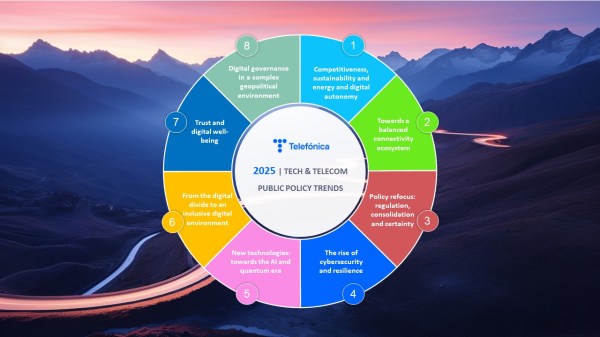The concept of Smart Building refers to those buildings whose installations and systems maximize efficiency and sustainability while ensuring the safety and well-being of people. By connecting and sensorizing the physical space, data is obtained and later interpreted to make decisions. All this is enabled by minimal latency, multiple broadband connectivity, the Internet of Things and advances in new technologies. For example, cloud computing and Big Data make it possible to efficiently manage all the information, while artificial intelligence algorithms facilitate the interpretation of data and the creation of predictive scenarios.
Telefónica’s commitment to promote development of Smart Buildings is based on our compromise to put technology at the service of people. Approximately 89% of our time is spent in these spaces, which highlights the importance of developing buildings that offer a good user experience and are safe.
In addition, Smart Buildings seem to be a solution to improve efficiency, contributing to meeting the carbon emission targets established in the European Green Pact. It should be noted that buildings account for around 40% of energy consumption and 39% of greenhouse gas emissions in the European Union.
Three fundamental axes for transformation
The transformation of Smart Buildings is based on three essential pillars: people, sustainability and security.
People
Smart Buildings make it possible to elevate the user experience, understanding their needs, habits, and preferences. In this way, the digitalization of the installations offers an adjustment of the building parameters -such as temperature or humidity- to improve comfort, a monitoring of the displacements to minimize waiting and avoid accumulations, greater connectivity with low latency, or a greater visual impact for the enjoyment of the user.
The Wanda Metropolitano is a great example that reflects the users’ experience through the implementation of audiovisual systems, connectivity or space reservation -among others- designed by Telefónica. These improvements have made it possible to reduce waiting times and increase spectacularism.
Sustainability
To reduce energy consumption, it is essential to transform our buildings and increase efficiency. The key is optimization, ensuring that only the necessary services are provided. Smart building solutions such as intelligent lighting, predictive monitoring and energy control have enabled our customers to avoid more than 9.5 million tCO₂e, which is equivalent to planting 158 million trees.
As an example, Telefónica Empresas’ IoT solutions have made it possible to automate, monitor and manage centrally and remotely several stores of the Tendam Group. This has achieved energy consumption savings of 15% and cumulative energy savings amounting to more than 3,700 MWh.
Security
The security of a building involves people, assets, and the building itself. Smart Buildings ensure early detection of any incident, responding with measures in line with the impact through technologies such as video-analytics or bio-metrics, coupled with drones and sensors.
The introduction of integrated solutions at BBVA‘s headquarters in Las Tablas, Madrid, is one example. The headquarters has a physical security system such as CCTV (closed-circuit television), access control and fire detection.
Innovative solutions for building transformation
Telefónica is partner of companies to enhance digital transformation in our country, being Smart Buildings a fundamental pillar of this transformation. Together with Siemens, we have created the Building Management System, a transversal platform that integrates the management of specific solutions according to the interests of each sector bearing in mind the different interests and needs of each building. For example, hospitals need to monitor the building environment, such as temperature or air quality, for the comfort of its patients, while banks prioritize the security of the building and its assets. This platform comes with a 3D model to visualize the information in each area of the building, and a dashboard to manage and control all the parameters of the building.
This is possible thanks to the digitalization of the building and the incorporation of connected sensors that collect data on air quality, temperature, capacity, movement of people and cybersecurity, among others. This information is sent over the best connectivity networks, both wired – in the case of fiber -, and wireless – 4G and 5G mobile networks-. In addition, the data generated also allows artificial intelligence to develop specific use cases to make recommendations on how the system should act. Examples of these use cases would be anomaly detection, mobility forecasting within the building or benchmarking performance and efficiency.
The digital transformation of buildings will allow citizens to enjoy enhanced user experiences, as well as enabling companies to develop their business in a more efficient, safe and sustainable way.
If you want to know more, click on the link to learn more about our Smart Buildings transformation handbook: https://www.telefonica.com/en/mwc/transformation-handbooks/









